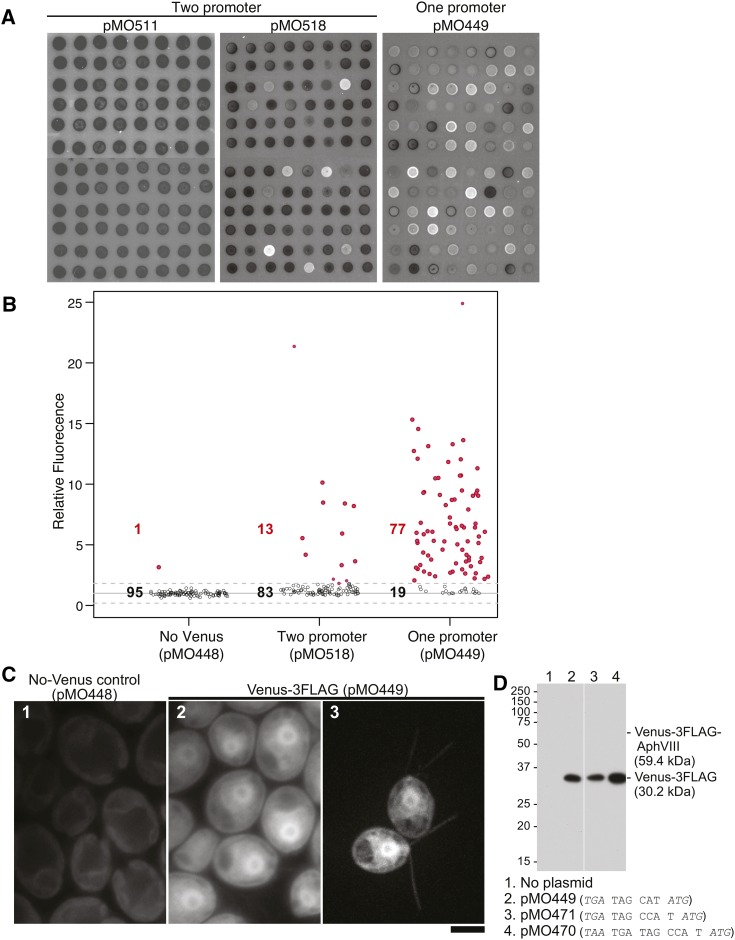Figure 2.
Frequencies and levels of Venus expression after transformation of Chlamydomonas with various constructs. (A and B) Strain CC-124 was transformed with the expression construct from plasmid pMO448 (control; no VENUS gene), pMO511 or pMO518 (two-promoter constructs; see Figure 1A), or pMO449 (one-promoter construct; see Figure 1B), and transformants were selected initially on 10 µg/ml paromomycin. In each case, 96 randomly chosen clones were analyzed further. (A) The clones from the pMO511, pMO518, and pMO449 transformations were spotted on plates containing 10 µg/ml paromomycin, grown for 3 d, and imaged using a fluorescence scanner (see Materials and Methods). (B) The clones from the pMO448, pMO518, and pMO449 transformations were grown in liquid medium without paromomycin in wells of a microplate for 5 d and analyzed using a fluorescence plate reader (ex515/em550 nm; see Materials and Methods). Each individual reading was normalized to the mean value for the control (pMO448) transformants, which was set at 1.0. Solid and dashed lines show the mean ± 3 SDs for the pMO448 transformants. Open circles and black numbers denote transformants whose fluorescence values were within the ± 3 SD window; red circles and numbers denote transformants whose values were above this threshold. (C) Cells of strain CMJ030 (1 and 2) or CC-124 (3) were transformed with the expression constructs from pMO448 (control) or pMO449 and selected initially on 20 µg/ml paromomycin. The transformants were grown further and observed by fluorescence microscopy using either the Eclipse (1 and 2) or spinning-disk (3) microscope as described in Materials and Methods. Image in 3 is a maximum projection of the z-stack. Weak signal in 1 represents autofluorescence from the chloroplasts; Venus signal in 2 and 3 is seen diffusely in the cytoplasms and (for unknown reasons) more strongly in the nuclei. (D) Cells of strain CMJ030 were transformed with the expression constructs from the indicated plasmids, selected initially on 20 µg/ml paromomycin, and then grown for 2 d at 24° in liquid medium with 1 µg/ml paromomycin. From each culture, 30 µg of total cell extract was subjected to SDS-PAGE and Western blotting using an anti-FLAG antibody. The predicted molecular weights of Venus-3FLAG and of a hypothetical Venus-3FLAG-AphVIII fusion protein are indicated.

